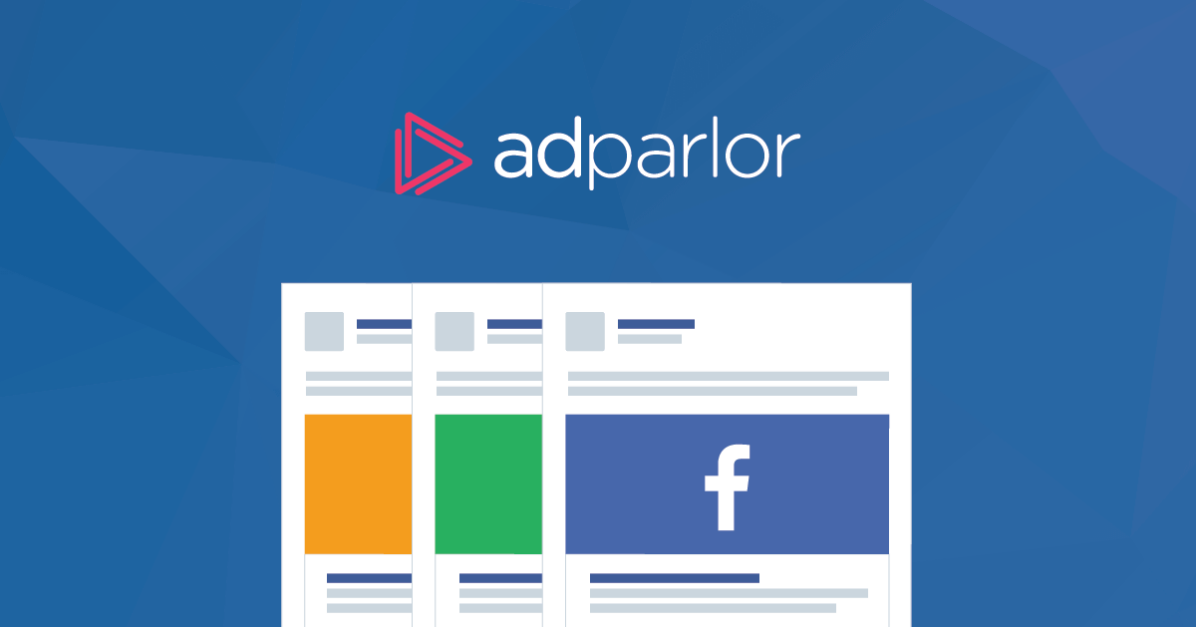Facebook’s Ads and Calls to Action: Week 1 Review

Smart marketers know that traffic acquisition is only half of the advertising equation — a successful campaign will also generate clear and tangible ROI.
Direct response (DR) advertisers have been committed to this principle for years and have mastered the art of driving positive margins on every unit of marketing spend. Test, measure, scale, and repeat — that’s the drive-sales-to-get-a-positive-ROI mantra.
It’s this commitment to ROI, however, that makes testing new advertising channels — like digital media — a challenge. There’s a healthy debate in the marketing world about whether Facebook drives clear and tangible ROI. The truth is that both sides of the fence are right.
Facebook Ads Get a Facelift
As one of 13 companies worldwide designated as a Strategic Preferred Marketing Developer (sPMD) on Facebook, the AdParlor team has volumes of data proving the value of digital. We’ve seen companies drive ROI through digital, but we’ll also be the first to tell you that on Facebook, success is very much defined by each campaign’s unique marketing framework.
Facebook Custom Audiences translates its art-meets-ROI advertising model into a clear direct response framework. Custom Audiences lets advertisers upload data for more precise targeting, including:
- Email addresses
- Phone numbers
- Facebook user IDs
- Mobile App Data
- iOS IDFAs
- Website URLs
But what we love most about Custom Audiences is the emphasis on conversion optimization — the process of transforming prospects into first-time customers and first-time customers into repeat buyers. The new ad units feature a clear call-to-action (CTA) to evoke a user response.
Facebook gives advertisers the option to choose from the following CTAs:
- Book Travel
- Shop Now
- Learn More
- Sign Up
- Download
IMG_CTA-mockup
Here is what AdParlor’s advertisers have seen in the last week.
A Deep Dive into the Data
This data, which is based on AdParlor clients, is 100% real. Over the last week, three of our advertisers — we’ll call them A, B, and C — ran tests to compare the new ad call-to-action buttons:
- Advertiser A – Jan 31 to Feb 4
- Total Reach: 460,000 users
- Placement: News Feed
- Vertical: Subscription Services
- Objective: New User Registration
| Click-Through-Rate | Cost-Per-Acquisition | Conversion Rate | |
|---|---|---|---|
| CTA (Sign Up) | 0.460% | $44.50 | 4.18% |
| No CTA | 0.579% | $48.54 | 2.94% |
- Advertiser B – Jan 31 to Feb 5
- Total Reach: 100,000 users
- Placement: News Feed
- Vertical: Apparel & Fashion
- Objective: New User Registration
| Click-Through-Rate | Cost-Per-Acquisition | Conversion Rate | |
|---|---|---|---|
| CTA (Sign Up) | 0.783% | $4.28 | 13.00% |
| No CTA | 0.424% | $8.60 | 10.92% |
- Advertiser C – Jan 31 to Feb 5
- Total Reach: 250,000 users
- Placement: News Feed
- Vertical: Apparel & Fashion
- Objective: New User Registration
| Click-Through-Rate | Cost-Per-Acquisition | Conversion Rate | |
|---|---|---|---|
| CTA (Shop Now) | 0.34% | $11.47 | 10.79% |
| CTA (Sign Up) | 0.33% | $8.14 | 16.99% |
Across advertisers A and B — two very different companies in distinct verticals — CTA-driven ads yielded higher click to conversion rates and more efficient costs per user acquisition. In addition advertiser C ran a unique test to determine which CTA was the most efficient for its objective. In that case, the “Sign Up” CTA was considerably more efficient at driving new user acquisition even though the service was an e-commerce based destination.
The Lifetime Value Equation
At first glance, a one-percent increase may not seem like much — until you dive into the math.
With these ad units, we’ve defined “conversion-rate” to capture conversion events (like sign-ups or registrations) over total ad unit click-throughs.
Imagine that you’re a media buyer and on average, your acquired users yield a lifetime value (LTV) of $1,000. At a 5% conversion rate, you earn $500,000 for every 10,000 click-throughs on your ad. Let’s say that you raise the conversion rate to 6% — that subtle boost yields an incremental change of $100,000.
Our Takeaways
There is a clear science that underlines the success of these ads, and it’s grounded in user psychology.
- CTA-driven ads perform better because they provide guidance for a clear post-click action. They stand out from the overall ad and help audiences navigate “next steps” to an online service they find appealing. You can think of these CTAs as a set of instructions or “map” to help guide users in the right direction, off the Facebook platform, to directly engage with your brand.
- It’s an understatement to say that mobile has become a staple among consumer audiences which have grown accustomed to mobile experiences with News Feed-driven ads and large, easy-to-click CTAs. Facebook is taking a mobile-first approach to reverse-engineer a high-performing desktop experience. That’s no surprise given that in Q4 2013, both Facebook and AdParlor reached an inflection point where the majority of both companies’ revenue came from mobile. While most advertisers start with a “desktop-first” approach, Facebook has set a new precedent by doing the opposite.
Final Thoughts
In case we haven’t made it clear, Facebook CTAs rock. We expect that this shift in strategy will pique the interest of direct response marketers who have previously been hesitant to advertise on social. Plain and simple, what a CTA brings to the table is clarity — users know exactly what to expect “after the click.” And you know what they say about simplicity. It’s elegant, and in this case, it’s also measurable.